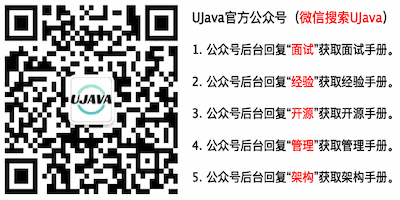组合模式
约 602 字大约 2 分钟
概述
介绍:组合模式是一种结构型设计模式,它允许你将对象组合成树形结构以表示“部分-整体”的层次结构。这种模式使得客户端可以统一对待单个对象和对象组合。组合模式所应用的就是树形结构以表达“部分/整体”的层次结构。主要是用来处理树形结构数据,与其说是一种设计模式,倒不如说是对业务场景的一种数据结构和算法的抽象。在组合模式中,有两种基本类型的对象:叶节点和组合节点。叶节点表示树形结构中的单个对象,而组合节点则表示树形结构中的对象组合。组合节点可以包含其他组合节点和/或叶节点,形成一个递归的树形结构。
场景:
- 1.适用于处理树形结构
- 2.忽略差异 : 希望客户端
可以忽略 组合对象 与 单个对象 的差异
SpringMVC框架中,Security Oauth2框架中
优点:
- 1.定义层次 : 清楚地 定义 分层次 的 复杂对象 , 表示 对象 的 全部 或 部分 层次
- 2.忽略层次 : 让 客户端 忽略 层次之间的差异 , 方便对 整个层次结构 进行控制
- 3.简化客户端代码
- 4.符合开闭原则
不足:
- 1.限制类型复杂 :
限制类型时 , 比较复杂 - 2.使设计变得更加抽象
具体示例
interface Component {
void operation();
}
class Leaf implements Component {
private String name;
public Leaf(String name) {
this.name = name;
}
@Override
public void operation() {
System.out.println("Leaf " + name + " operation.");
}
}
class Composite implements Component {
private String name;
private List<Component> children = new ArrayList<>();
public Composite(String name) {
this.name = name;
}
public void add(Component component) {
children.add(component);
}
public void remove(Component component) {
children.remove(component);
}
@Override
public void operation() {
System.out.println("Composite " + name + " operation.");
for (Component component : children) {
component.operation();
}
}
}
public class CompositePatternExample {
public static void main(String[] args) {
Composite root = new Composite("Root");
root.add(new Leaf("Leaf A"));
root.add(new Leaf("Leaf B"));
Composite branch = new Composite("Branch");
branch.add(new Leaf("Leaf C"));
branch.add(new Leaf("Leaf D"));
root.add(branch);
root.operation();
}
}在这个例子中,Component是组合中对象的接口,Leaf是叶节点,不能有子节点,Composite是组合,可以有子节点。Composite实现了operation方法,它会遍历并调用所有子节点的operation方法。这样,无论是叶节点还是组合,它们的处理方式都是一致的。
公众号更有货,推荐关注!
